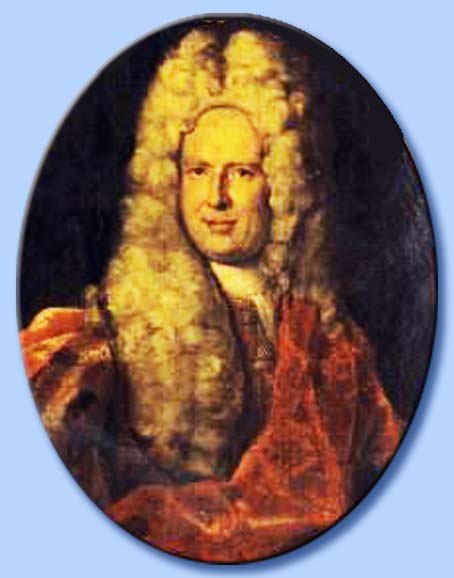Christian Knorr von Rosenroth
Christian Knorr von Rose Roth ( born July 15 or July 16, 1636 in Old Raudten, Duchy Wohlau; † 4 May or May 8, 1689 in Sulzbach (Oberpfalz ) ) was a German polymath, a poet, writer and Protestant hymn writer.
Life
Knorr Rose Roth was Silesian pastor's son, the Latin school, the Pädagogium visited on women's town, then in Szczecin and studied from 1655 theology, law, history, philosophy, classical and modern languages and closed his studies in 1660 as a Master with a dissertation on the ancient numismatics from. In the following years he pursued private studies, probably in Wittenberg and traveled 1663-1666 the Netherlands, France and England. In the Netherlands, he made contact with Christian groups such as the Mennonites, Theosophists and spiritually inspired naturalists. Meir Stern taught him in the Kabbalah. Life is decisive for him was the contact with Franciscus Mercurius van Helmont, son of the famous Johan Baptista van Helmont, through whose mediation he court and chancery of Duke Christian August of Sulzbach was 1668. Through his promotion, he established around 1670 in Sulzbach an Musenhof, who had great influence on the then spirit world. 1671 made van Helmont Knorr von Rosenroth with Leibniz known.
Christian Anton Philipp Knorr Rose Roth is his nephew.
Work
Knorr Rose Roth's work contains occasional poems for the Sulzbacher yard, transfers of collections of natural philosophy works he commented extensively, a compilation of writings of Jewish mysticism under the title Kabbalah Denudata, proven with Knorr von Rosenroth the single origin of Christian doctrine and Kabbalah wanted. Of the many songs that he composed for private family occasions, is the song of eternity Morgenglanz still in ecclesiastical use.
Writings
- Apocalypse Commentary. Edited by Italo Michele Battafarano. Lang, Bern 2004, ISBN 3-03910-401-2.
- Kabbalah denudata. Olms, Hildesheim 1999, ISBN 3-487-05245-8 ( Ethnographic sources).
- Conjugium Phoebi & Palladis, or invented Fortpflantzung of gold. Chymical allegory. Lichttaler, Sultzbach 1677th ed Italo Michele Battafarano. Lang, Bern 2000, ISBN 3-906765-55-5 (Iris, 16).
- New Helicon with his nine Muses. That is: Spiritual morals songs, From Erkäntnüs of true happiness and the unhappiness of false goods. From a Lovers Christian exercises. Felßecker, Nuremberg 1699th
Aftereffect
On behalf of the Christian Knorr von Rosenroth Society Rosmarie Zeller published in 1991 by Peter Lang ( Bern and others), the magazine morning Glantz out.
In Sulzbach -Rosenberg since 2007, the Knorr von Rosenroth festival takes place in the center of each should be in the re-enactment of a play of Knorr von Rose Roth.










